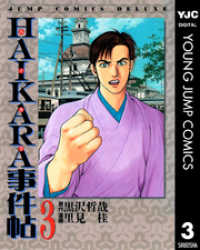- ホーム
- > 洋書
- > ドイツ書
- > Humanities, Arts & Music
- > Philosophy
- > miscellaneous
Description
(Text)
This volume deals with the dissolution of the concept of the ideal body as a repository of knowledge through instances of deformation or hybridization.
The starting point comprises a series of case studies of less than perfect bodies: bodies that are misshapen, stigmatized, fragmented, as well as hybrid human/animal creatures, transgendered persons, and bodies on the cultural periphery of the classical world. These examples represent deviations from the »normal« order of things and evoke feelings of alienation. One strategy for dealing with this is to canonize transgression in visual form. Fluid bodies are captured in the image, creating a visual order in disorder. The body-as-ruin is a fixed figure of fluidity and thus receptive to attributions of meaning, which helps explain its persistence as a cultural trope. It allows for the observation of cultural change.This volume deals with the dissolution of the concept of the ideal body as a repository of knowledge through instances of deformation or hybridization
The starting point comprises a series of case studies of less than perfect bodies: bodies that are misshapen, stigmatized, fragmented, as well as hybrid human/animal creatures, transgendered persons, and bodies on the cultural periphery of the classical world. These examples represent deviations from the »normal« order of things and evoke feelings of alienation. One strategy for dealing with this is to canonize transgression in visual form. Fluid bodies are captured in the image, creating a visual order in disorder. The body-as-ruin is a fixed figure of fluidity and thus receptive to attributions of meaning, which helps explain its persistence as a cultural trope. It allows for the observation of cultural change.
ruin is a fixed figure of fluidity and thus especially receptive to attributions of meaning, which helps explain its persistence as a cultural trope. It allows for the observation of cultural change.
-

- 電子書籍
- 夏目アラタの結婚【単話】(81) ビッ…
-

- 電子書籍
- 復讐の騎士はいとしい妻にひざまずく【1…
-

- 電子書籍
- 学習まんが 日本の伝記SENGOKU …
-

- 電子書籍
- HAIKARA事件帖 3 ヤングジャン…




